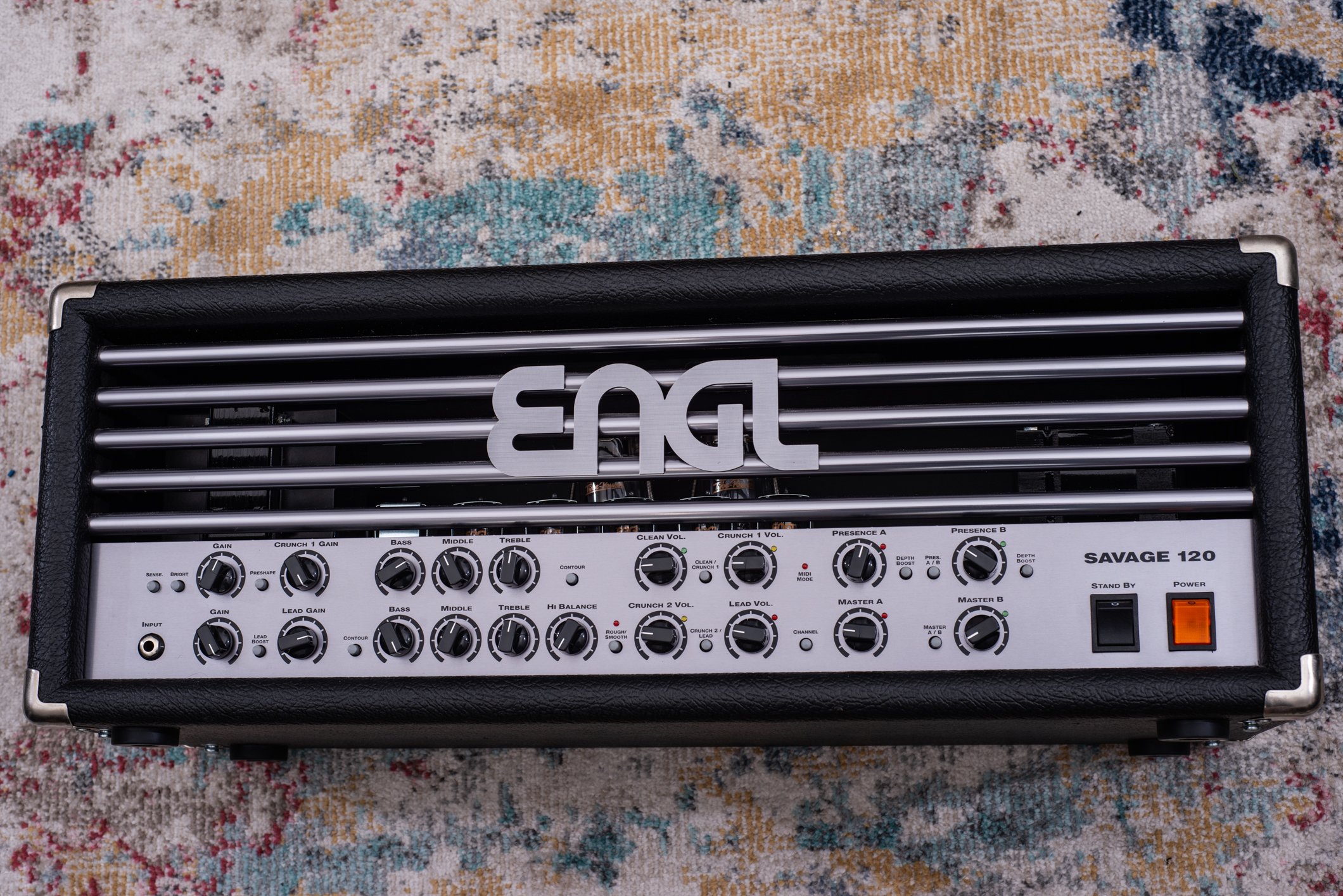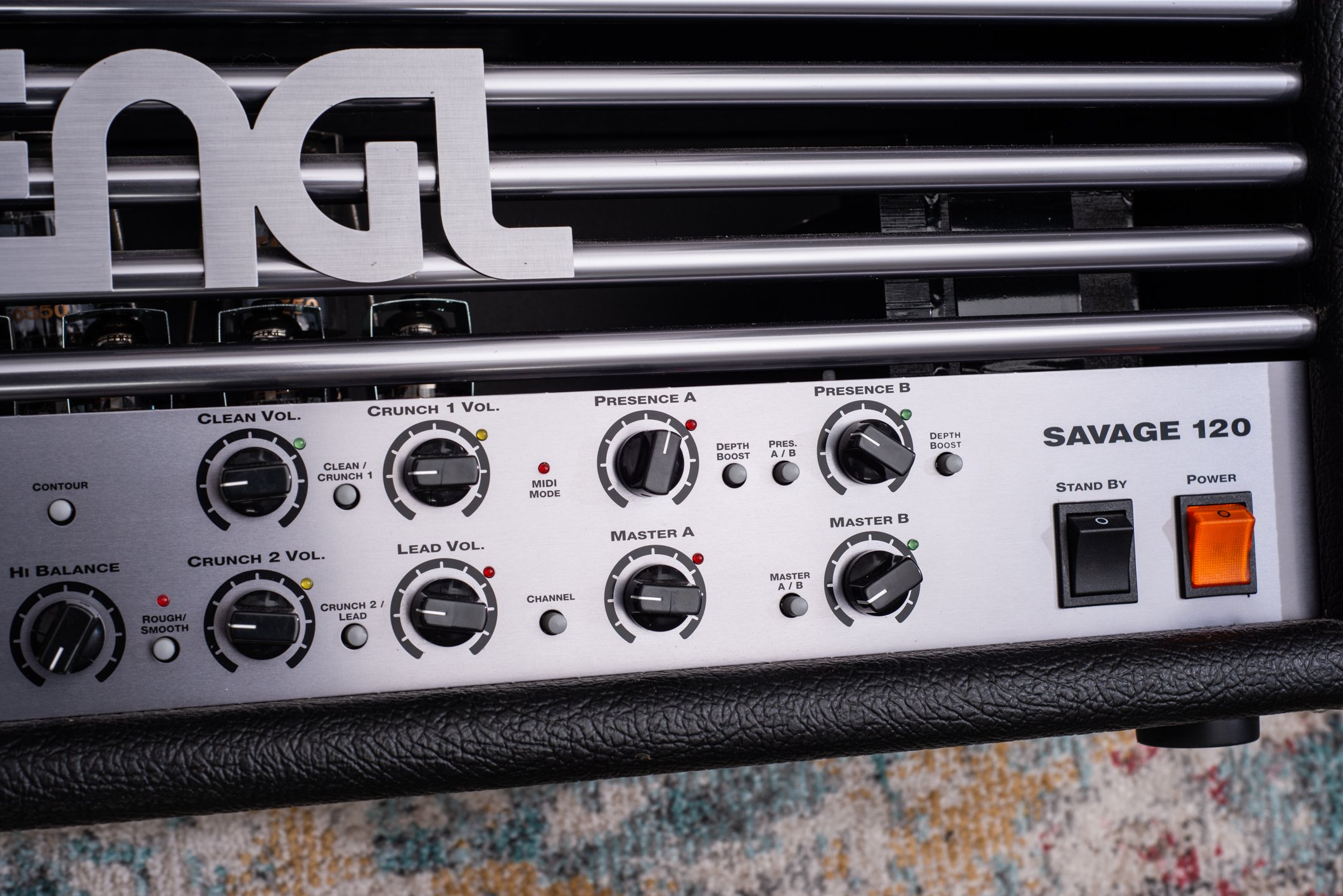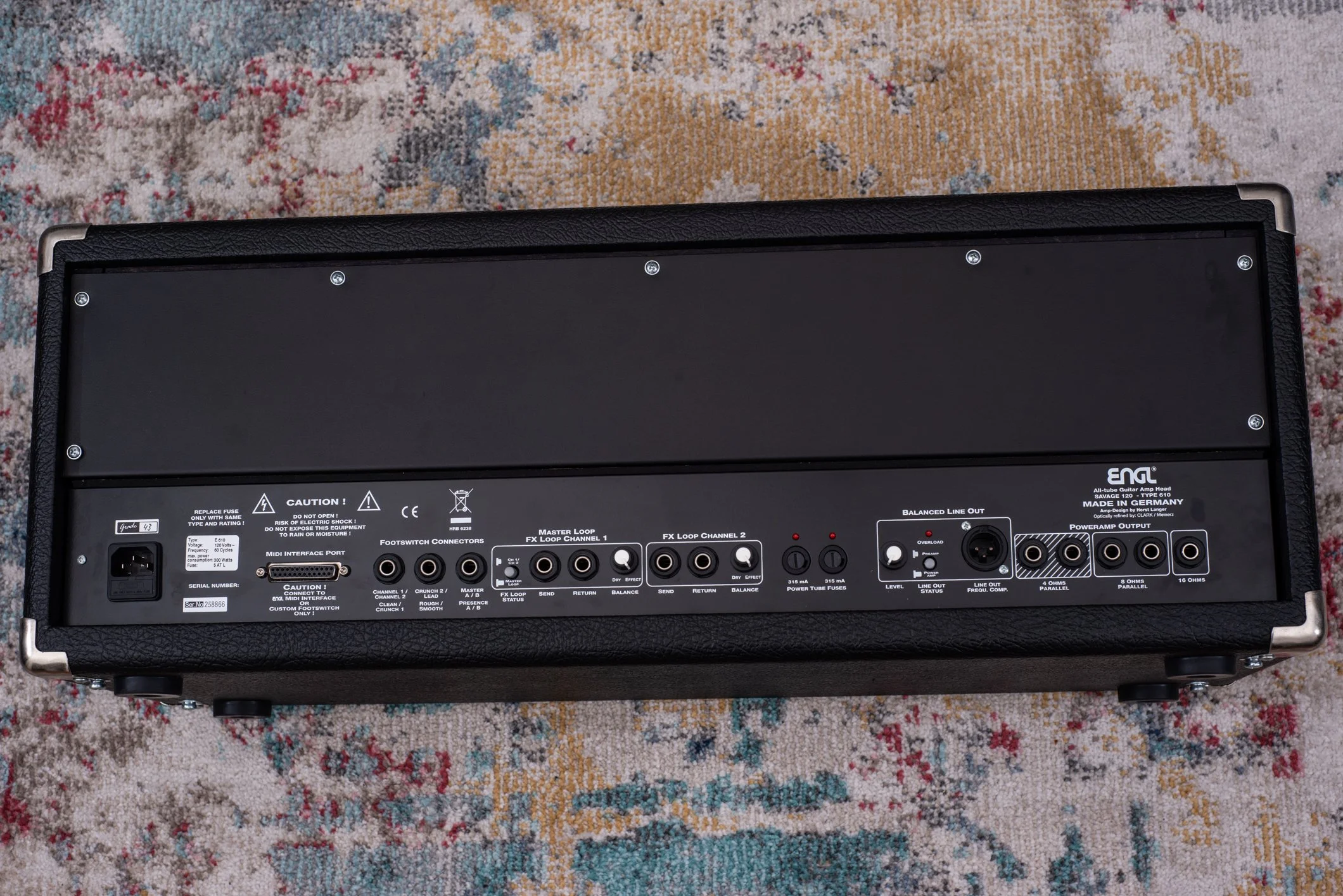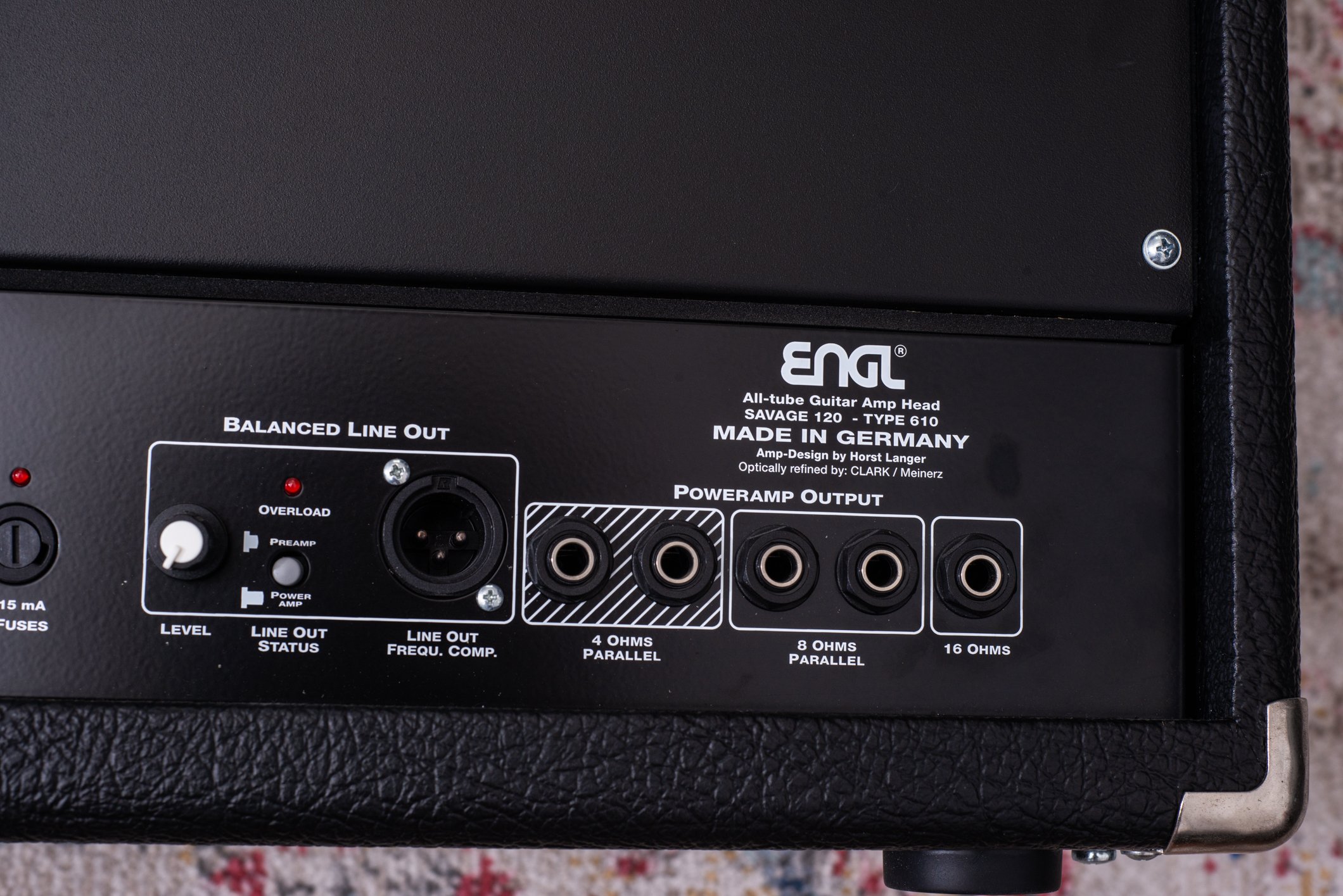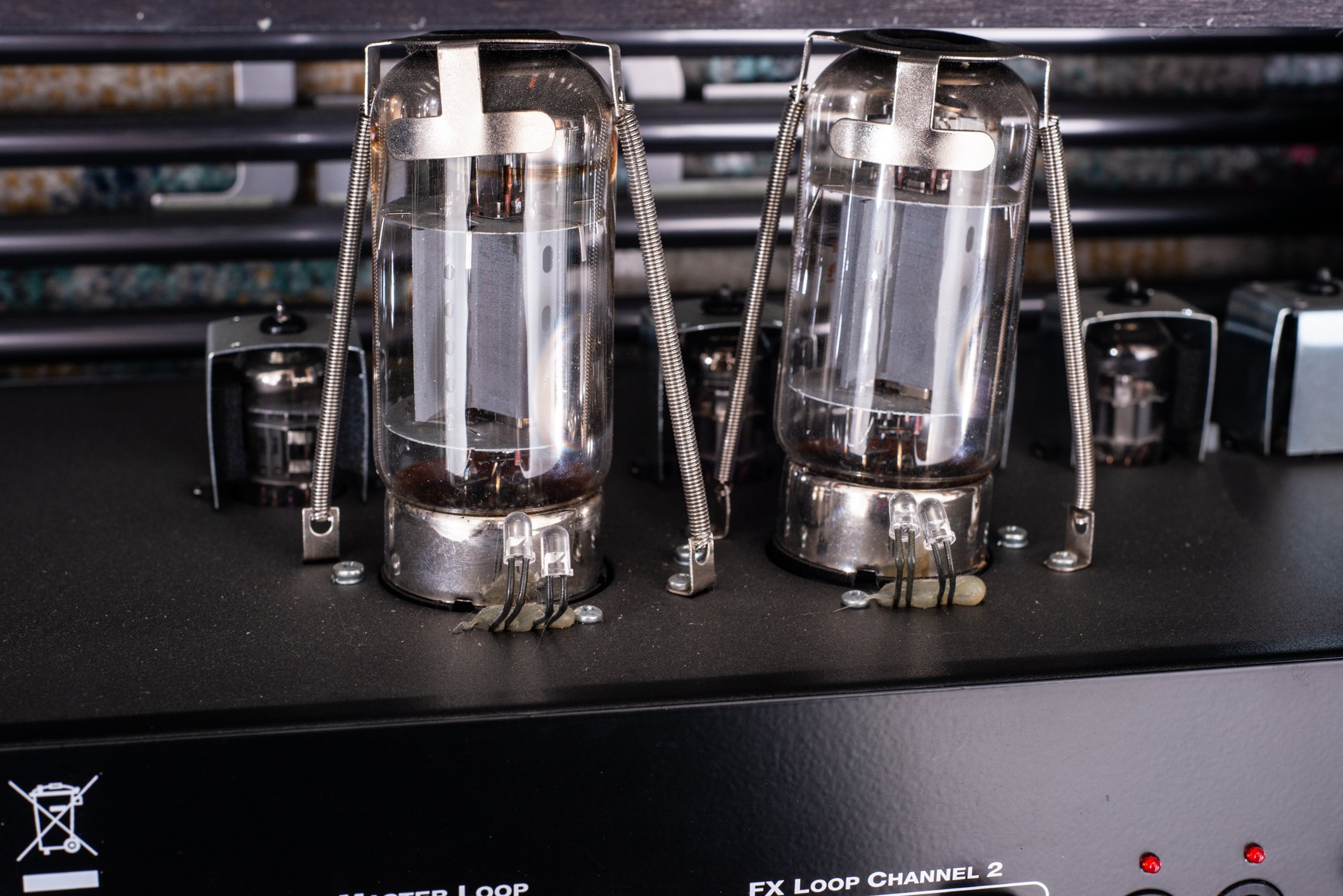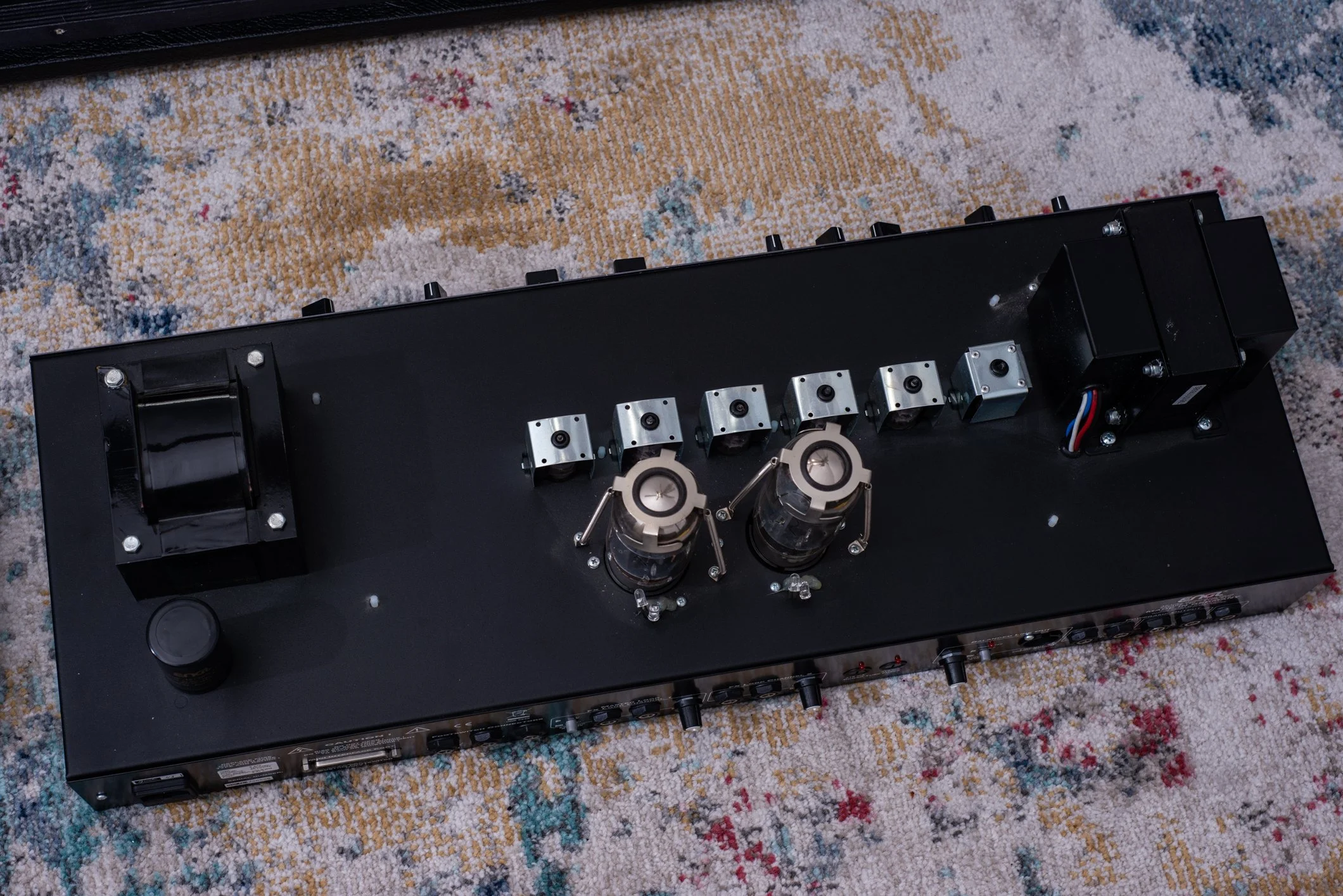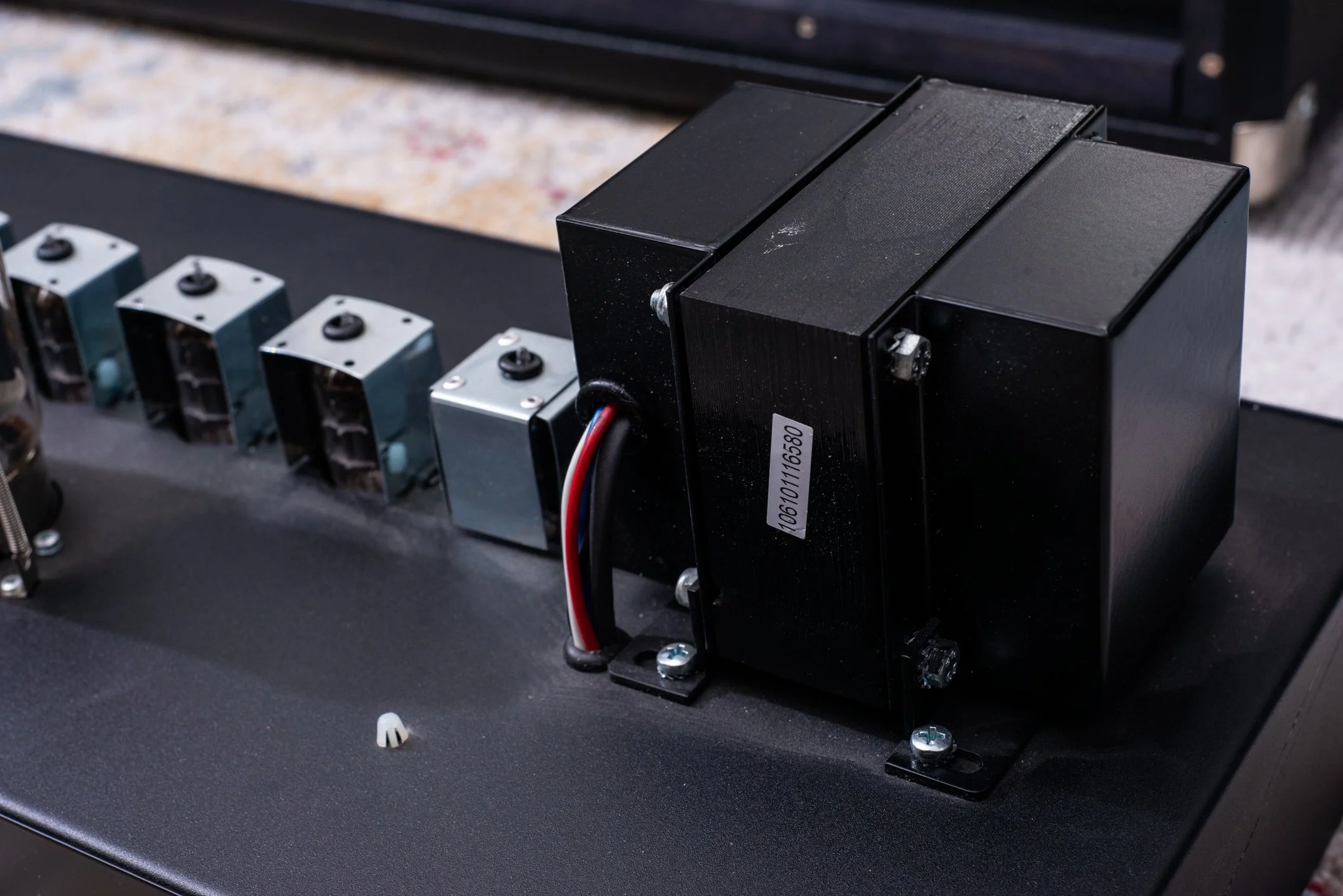2011 ENGL Savage 120 (E610)
Specs
2 Channels with 2 modes
120w Output
2x KT88/6550 Power Tubes
6x 12AX7 Preamp tubes
2 effects loops
6-button Z10 footswitch, or 3x 2 button footswitches with 1/4” cables
Footswitchable master volumes, presence controls, rough/smooth tone switch
Introduced: 1993
$2449 in 2011
Overview
After hunting for more than a year, and missing out at least twice, I finally acquired this Savage 120, in excellent condition, without paying through the nose for it. This is one of the most well regarded ENGL amps and rightfully so - I didn’t know exactly what to expect when I first set it up but I have to say it has some of the best tones I’ve heard from any amp.
It might surprise people, but the Savage was first released all the way back in 1993 - and closer inspection of the tone and features makes that even more clear. This amp came around during a bit of a high-gain renaissance of sorts - the Peavey 5150, Mesa Dual Rectifier, VHT Pittbull Classic, Diezel VH4, and Marshall 6100 (and later 6100LM’s) had just come out in 1992. That’s already a list of some of the best amps ever made - with even more high gain channel switchers on the way in the mid 90s like the Bogner Ecstasy. Prior to the Savage, ENGL offered the E101/102 digitally programmed amps, the ENGL Straight, and preamps like the E520 - but not much in the way of “serious” full size, full feature channel switching heads (that’s not to say their earlier amps were bad by any means, just appealed to a different kind of market). However, with the release of the Savage, they were in the big leagues.
The Savage is a full size, 120 watt head, sporting a pair of KT88’s in the power section. It’s been advertised as a 4 channel amp, but that’s not exactly true, and leads to some mistakes when dialing it in. It’s better to think of it as a two channel amp, each with two "modes,” and 4 volumes for each. Basically, the gain controls are interactive when you use the second mode on each channel - Crunch 1’s gain is affected by the setting of the Clean gain, and the Lead gain is affected by the setting of Crunch 2’s gain... it makes a lot of sense once you sit down and start turning the knobs. In addition to the interactive gain controls on Crunch 1 and Lead, there are several push button switches that have drastic effects on the tone. Channel 1 (Clean, Crunch 1) has a Sensitivity, Bright, Preshape, and Contour switch, all of which have major effects on the tone. I’m especially fond of Crunch 1 with the Contour turned on, which makes for an absolutely killer mid-gain rock tone on par with any Marshall. The bottom channel row (Crunch 2, Lead) has a Lead Boost, Contour, and Rough/Smooth switch, plus a knob called “Hi Balance.” I find the Lead Boost to add extra saturation at the cost of clarity, while the Contour is very aggressive and scoops out the mids. Rough/Smooth is interesting, in the “Rough” mode (default) the sound is a big wider ranged, with plenty of treble and bass. The “Smooth” setting chops off the treble while also reducing the bass - it’s a unique tone but generally I prefer the “Rough” setting. “Hi Balance” is only active while the amp is in “Smooth” mode, and allows you to adjust where that cutoff of the treble occurs, and since “Rough/Smooth” is footswitchable, you can create a different texture of the lead channel to use for a solo or alternate rhythm part without touching the rest of the EQ - very cool.
Each “Main Channel” has a separate volume control, which means it’s easy to set up 4 different, usable tones without any kind of unwanted volume jumps or drops. Even better, there is an overall master volume, so once you have the channel volumes configured to your liking, you can tweak the overall volume easily for different rooms or venues. And if that wasn’t enough, there is also a Master B that is footswitchable, so you can get an overall volume boost regardless of what channel you are on. That’s pretty useful, and since the amp covers so much ground tonally, I’d say this is a dream amp for any band that has a lot of different tones in their songs, cover bands, etc. The amp also has footswitchable Presence “A” and “B” controls, and that also includes the “Depth Boost” switches attached to them as well. That’s a lot of controls, but means there are a ton of available tones and options to use them all effectively in a live environment.
Of course, all the options in the world won’t matter if the tone isn’t good - but that’s not the case here! This amp has some of the best tones I’ve heard, and I really want the emphasize that this isn’t just a metal player’s amp. The clean channel is a little less hi-fi than something like the InVader, but it’s got a great tone with lots of options. The sounds that really surprised me though are those coming from Crunch 1, which can be made to sound very much like a classic Marshall style mid-gain rock tone. It’s bright, it’s thick, and has that grit in the mids that really makes it cut through. Adding a boost to this is great for solos and I’d argue that an amp with just these two channels (Clean and Crunch 1) would already be remembered as one of the best amps of its kind. Then, add in Crunch II, which is straight into hot-rod territory and can do classic metal or dialed down for crunch-but-more tones with ease. Of course, the Lead channel is a highlight of this amp, either for metal rhythm playing or for solos which it excels at equally. This lead channel is quite unlike something like the Powerball/Fireball, or other metal amps with extreme bass - I’m hesitant to again use Marshall as a comparison, but it’s easiest to equate the Lead channel on this amp to more of a modded Marshall type tone than to those more “metally” type tones. Of course, a little more aggressive EQing, or a 10-band in the effects loop (or post processing) can hit those tones no problem, since the bottom end is extremely tight and saturates nicely, but more like the way a VHT/Fryette amp would - “dry” as some would call it. The Savage is just a bit more mid-focused than those other metal amps, and lacks the extreme bass which seems to have taken off in newer designs like the other ENGL’s or amps like the Bogner Uberschall. If there’s any limitation to mention, it’s that the Lead channel is so good that I feel I must make no compromises on its tone - which with my setup means running the Crunch 2 gain maxed out. This means that I don’t get to play around with more mid-high gain tones that Crunch 2 can do so well without sacrificing the Lead tone that I find to be best - but that’s ok because Crunch 1 already sounds fantastic and I can add a boost to get into that in-between area - or I use Crunch 2 with the gain maxed and roll the volume off a little bit.
Another feature I find particularly useful, since I do not have the original Z-10 footswitch, is that the amp can function just fine with a couple of 1/4” cable footswitches. If I had 3x 2 button footswitches, I’d have access to all of the same functions as the actual Z-10 which is great, since it’s easy to get access to those more common types of footswitches. It’s also a really nice perk if you were to accidentally forget the original footswitch or something - the amp is still usable as a channel switcher without it. The Z-10 is quite odd of course, due to the time this amp was designed, and it has a very old school computer looking plug, that looks similar to an old Parallel port on a 90s printer, complete with the little screws on the side to hold the connector in place and prevent broken pins - now that’s a throwback!
The amp also has two effects loops, which can be configured to work two different ways from a push button on the rear of the amp. The first setting has the “Master Loop” active on both channels, and anything plugged into the second loop is ignored. The second (push button in) has anything plugged into the Master Loop only present on Channel 1 (Clean, Crunch 1) and the second loop is active on Channel 2 only (Crunch 2, Lead). This means you can have a separate configuration of effects - for example, you might want a noise gate and delay on the lead channel, while you have a reverb and chorus on Channel 1’s Clean or low gain Crunch 1 sound. That’s a really cool way of doing it although I kind of wish you could just switch them on and off separately per channel (for example, I might want effects from both loops available on Channel 1, but only one loop on Channel 2 - which isn’t possible).
There is a Savage Mk II available now with a few interesting new features. The Mk II has a built in noise gate, midi switching functionality, and it can use a SAC (serial) ENGL footswitch which makes a lot of the functions available - but it lacks the 1/4” footswitch plugs now. It also lacks a separate Depth Boost switch per Presence control, so it might require two button presses if you’re preferred use is to have one Presence with Depth on and you want to switch to the second Presence with Depth off. Channel 1 also has a new mids configuration in the EQ, with “Mid Lean” and “Mid Bold” knobs and a switch to swap between them. Some of the controls are renamed slightly to make what they do a little more clear - but I’m really interested to know if the gain controls are still interactive as they were on the original Savage. The manual for the mk2 does not make this clear - on the one hand, if they are no longer interactive, there’s probably a bit more instant gratification of plugging into the lead channel with all controls at noon and rocking out, but it does mean you don’t have the ability to customize the texture of the gain by tweaking both gain controls to your liking for a given channel (note: from watching Youtube playthroughs, the gain controls appear to be no longer interactive). While I’d still love to have a mk2 model, I’m very glad I was able to experience this mk1 for comparison, even with its little quirks. The biggest upgrade is the new 60 watt mk2 which has identical controls and setup to the 120 watt version - the previous Savage 60 mk 1 was a very stripped down amp compared to its larger KT88 powered variant.
